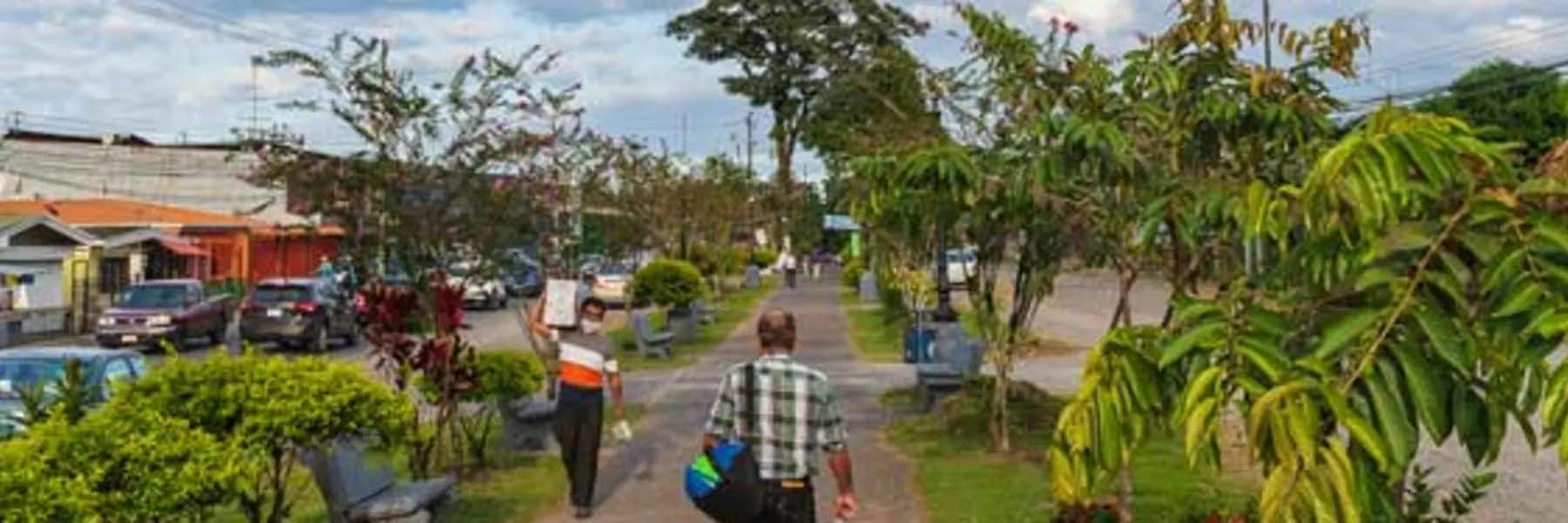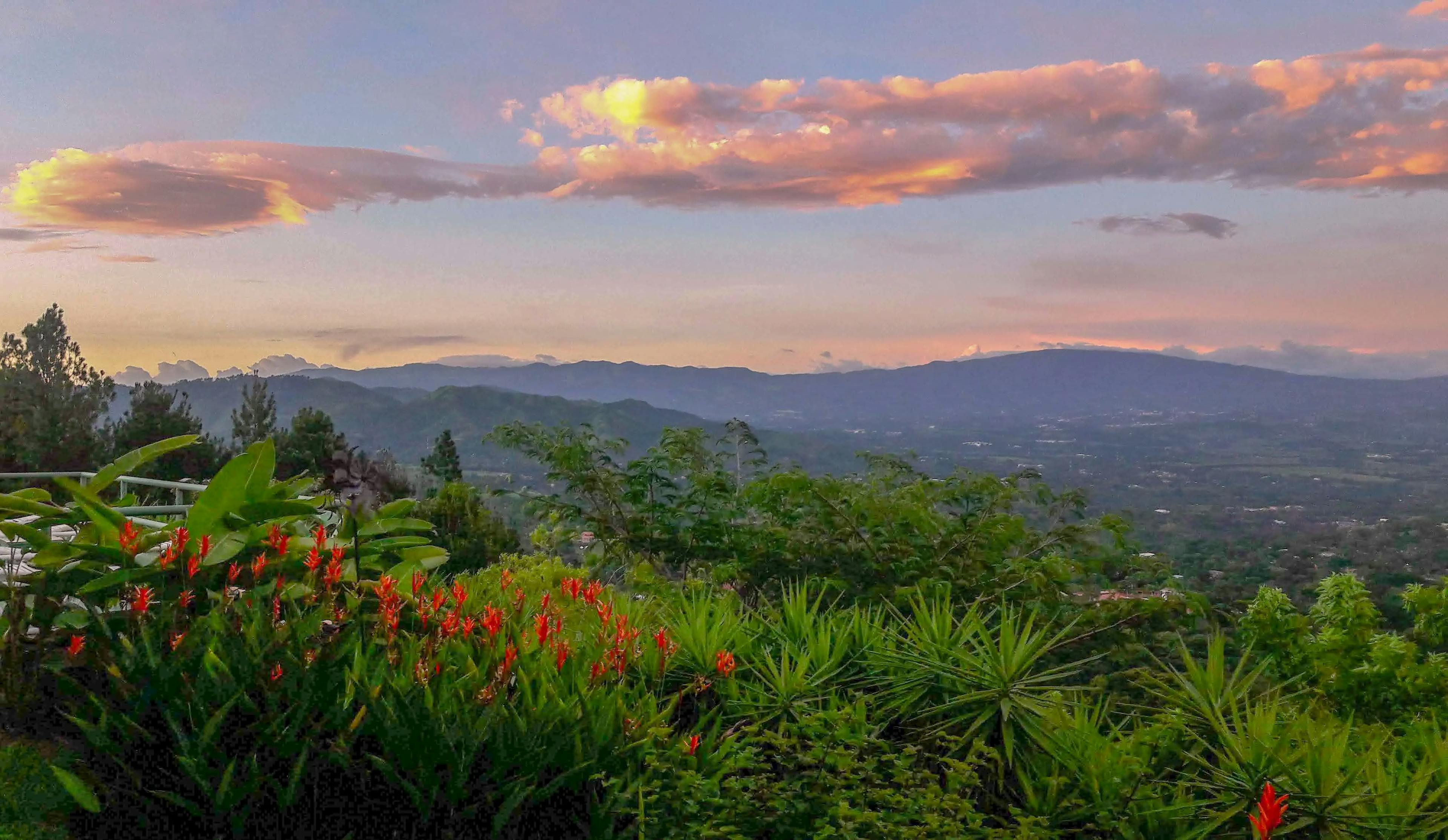By Caitlan Hester
In the tropical lowlands between the Caribbean Sea and the Central Mountain Range, Guápiles is a growing business hub set serenely among rural, farming communities.
Strategically located between the capital city and the Port of Limón, Guápiles was unofficially born in the 1800s as a railroad depot.
It was when the few inhabitants began to grow banana that Guápiles’ population began to climb and it was officially founded in 1911. The influence of the international banana and pineapple trade continues to shape Guápiles today, employing thousands of people in the Limón province. Industry leaders like Dole Food Company and Del Monte Foods rely largely on their Costa Rican offices and plantations.
Retire in Guápiles
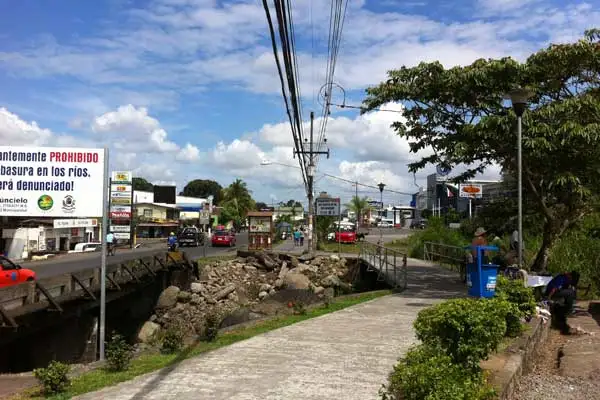
Abundant employment opportunities and an entrepreneurial drive have helped Guápiles thrive. Despite Guápiles’ quaint, rural setting, expatriates and locals can find almost any product or service, without needing to travel to the capital.
Guápiles is the capital of the territorial district (or canton) of Pococí in the Limón province. The Pococí district is the seventh most populous in the country with around 150,000 inhabitants. A mere 38,000 of which, live in Guápiles.
Because Pococí and its towns are spread out over a wide territory instead of packed into Guápiles downtown, you don’t get the sense of living in a city.
Despite its size, Guápiles is largely overlooked by tourists and those retiring to Costa Rica because it isn’t on the coast nor located in the Central Valley.
This means that the prices for products and services have been set for residents, so you won’t get gouged with tourism hot-spot prices.
Health
Guápiles offers its inhabitants excellent healthcare with variety; a public hospital, numerous private clinics, dentists, pharmacies, nutritionists, spas, gyms, and veterinary clinics for your furry family members.
Shopping
When it comes to groceries, you can choose from a neighborhood mom-and-pop shop, the Saturday morning farmer’s market, or head to a big-box grocery store where parking is more convenient.
For your clothing needs, you have your choice among used clothing stores, department stores, and boutiques.
Many Guapileños opt to take a day trip to do their shopping in the malls of San José 45 miles along route 32. There is a mall in Guápiles that the locals affectionately, yet teasingly, call the “small” because of its pint-size.
Get Your Free Costa Rica Report Here
Get Your Free Costa Rica Report Here
Learn more about Costa Rica and other countries in our daily postcard e-letter. Simply enter your email address below and we’ll send you a FREE REPORT - Explore the Old World in Laidback Costa Rica.

By submitting your email address, you will receive a free subscription to IL Postcards and special offers from International Living and our affiliates. You can unsubscribe at any time, and we encourage you to read more about our Privacy Policy.
Things to Do in Guápiles
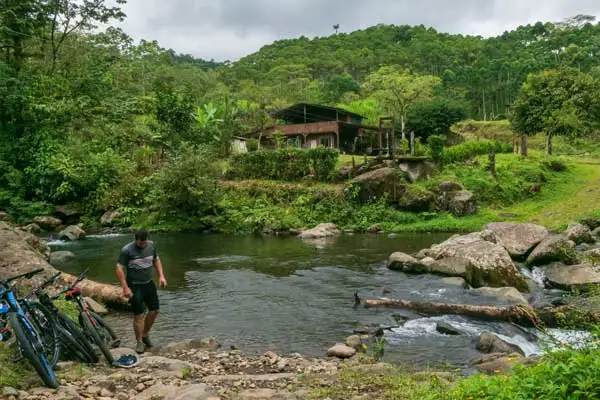
Guápiles isn’t quite the tourism magnet. You usually only see tourists in Guápiles when they’re making a stop on their way to Tortuguero or Puerto Viejo.
What your common tourist doesn’t know is that there is no shortage of things to do in Pococí.
Outdoor Activities Galore
Guápiles is surrounded by lush, tropical landscapes that are bound to excite any nature lover.
Waterfall Hikes
Locals and expats alike enjoy hiking to a waterfall or river where you can take a dip or have a picnic.
Some of the waterfall hikes within an hour’s drive from Guápiles include the Montes Waterfalls at Figues Farm, the Golondrinas Waterfall, and the Waterfalls at Finca Pozas Guácimo.
These are a few of the waterfalls that are a short hike with easy accessibility. But they are just a few of many options you have nearby.
Adventure
If you’re looking for an adventure mountain biking has become a hugely popular pastime in the area as there is no shortage of challenging dirt roads.
And the Pacuare River, a 40-minute drive away offers world-class rafting featured by National Geographic.
Birdwatching and Photography
But if you like to get outdoors and take things a little slower, you can see the sites through a camera lens or binoculars.
Wildlife photographers—professionals or hobbyists—won’t be hard-pressed to find howler monkeys, sloths, and iguanas. If you live outside Guápiles center in a neighborhood like Bella Vista or Buenos Aires, you’re likely to see wildlife in your yard.
Birdwatchers can rack up an interesting life list from their yard as well, spotting green and red macaws, aracari toucans, Montezuma oropendolas, crested caracaras, and ornate hawk-eagles.
The Suerre Country Club
If it’s raining outside and you need something to do, for $1,000 a year plus a $24 monthly maintenance fee you can join the Suerre Country Club. Where you’ll have access to an Olympic-sized pool, as well as tennis, basketball, and volleyball courts.
It also has a fitness center and game room.
Exercise and the Arts
You don’t have to have a country club membership to stay active. There are pools, dance classes, yoga classes, etc.
Regarding the arts, cultural events, and foreign languages (outside of English), Guápiles is a little lacking. There are places to take music painting lessons. But don’t count on a movie theater, live theater, a museum, or organized Spanish classes.
September, however, is an excellent month to be in Guápiles for cultural events. Independence Day celebrations are also met with the fair, bull runs, rodeos, a Carnaval parade, and a horse parade called the ‘tope’.
Soccer
The Guápiles team, the Santos, plays in the first division of the national soccer league. Matches are held frequently in the Guápiles stadium, Ebal Rodríguez.
Travel
Because Costa Rica is roughly the size of West Virginia, no matter where you live, you’re never far from an ideal Costa Rican travel destination: a beach, a mountain, a cloud forest, a national park, a waterfall, hot springs, or the capital.
The Braulio Carrillo Park is only 14 miles from Guápiles.
This park is part of the Braulio Carrillo National Park which protects 117,300 acres of forests. And it’s filled with outdoor activities for everyone; hanging bridges, an aerial tram, a walking tour, and a hummingbird garden.
Guápiles is located 32 miles from Tortuguero National Park where you can explore the freshwater, croc-filled rainforest canals by boat. And witness turtle nesting or hatching by night.
The famous, cone-shaped Arenal Volcano located in La Fortuna, San Carlos is a hop, skip, and a 76-mile jump away.
In Guápiles, even though you’re not on the coast, the laidback Caribbean beach town of Puerto Viejo is just 94.5-mile away.
And when it’s time for the occasional movie on the big screen and window shopping in air-conditioned malls, you’re only a 45-mile drive from the capital, San Jose.
Get Your Free Costa Rica Report Here
Get Your Free Costa Rica Report Here
Learn more about Costa Rica and other countries in our daily postcard e-letter. Simply enter your email address below and we’ll send you a FREE REPORT - Explore the Old World in Laidback Costa Rica.

By submitting your email address, you will receive a free subscription to IL Postcards and special offers from International Living and our affiliates. You can unsubscribe at any time, and we encourage you to read more about our Privacy Policy.
Getting Around in Guápiles
The local bus system has a far reach but poor schedules.
You’ll be much happier with a car of your own or budgeting for taxis.
The official red taxis now respond to WhatsApp messaging. Whereas Uber is around but remains limited.
Because Guápiles is relatively flat, getting around on a bike is easy, but with a caveat. You must be careful while getting used to chaotic (by a Western standard) driving.
You can’t hold Costa Rica, Guápiles included, to the same road etiquette that you’ve come to expect from your home country.
Lifestyle in Guápiles
Guápiles is pura vida in the country-living sense instead of the salt life/beach town sense. In Guápiles center, life tends to be slower than in the city but a little more fast-paced than the beach.
It’s a city with many young professionals—agricultural engineers, medical professionals, University students, and educators.
But when you step outside of Guápiles downtown, Pococí is the home of thousands of farming families. It’s not unusual to see a farmer ride through town on horseback.
And therein lies the beauty of Guápiles, you can have both: you can run errands and enjoy all the comforts and conveniences of the city (without all the traffic) and then drive 10, 15, or 20 minutes to your cozy, rural home surrounded by greenery.
A few of the towns and neighborhoods near Guápiles that offer you this convenience include Jiménez, La Colonia, Bella Vista, or Buenos Aires.
The average yearly temperature sits around 82 F. The dry season (December through April) is hot. And the rainy season (May through November) is humid. When it rains in Guápiles, it pours. But it typically only rains for two to three hours a day and then lets up.
Downtown Guápiles almost always feels hot and stuffy because of all the concrete and asphalt. But the rural communities shaded by trees stay cool and breezy.
Real Estate in Guápiles
Real estate in Guápiles is incredibly affordable. Basic homes are available for $60,000. But you can find nice two to three-bedroom, two-bath homes on a spacious lot from $100,000 to $150,000.
The further from Guápiles center you go, the more affordable the prices, and the more scenic.
The typical rental range for a two or three-bedroom with one or two bathrooms ranges from $350 to $800 a month, depending on how much space and modernity you’re looking for.
Cost of Living in Guápiles
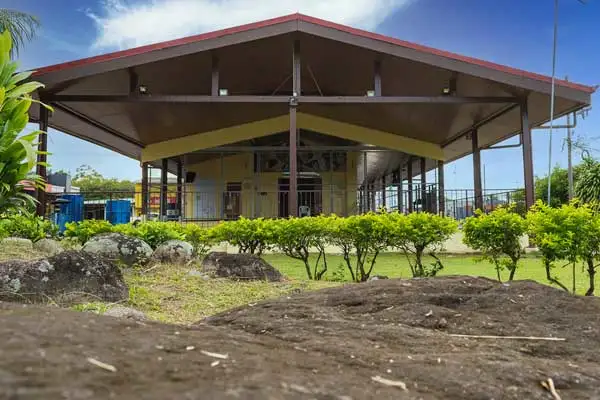
Guápiles is more affordable than most places where expats choose to settle in Costa Rica. The territorial district of Pococí is comfortably priced when you consider its size and population.
Let’s break down some monthly costs for two people moving to Guápiles, Pococí.
| Expense | U.S. $ |
|---|---|
| Rent | $350 to $800 |
| Water | $12 |
| Electric | $22 |
| Phones (x2) | $44 |
| Cable and Internet (Fiber-optic 30 Mbps download, 10 Mbps upload. Digital Cable on two TVs, 100+ channels) | $58 |
| Groceries and Household Items | $500 |
| Total: | $986 to $1,436 |
Advantages of Living in Guápiles
1. When you live outside the coast and the Central Valley you can save cash and stretch your savings, especially when it comes to real estate and groceries.
2. Guápiles is conveniently located between the Caribbean and the capital, San Jose, surrounded by unlimited things to do, especially if you’re a nature lover.
3. The small expat community means you can immerse yourself in your community, get to know the Costa Rican people, their culture, and learn the language.
Disadvantages of Living in Guápiles
1. Guápiles is not on the beach and it’s not in the mountains. It is surrounded by lush vegetation and it boasts beautiful views of the Turrialba volcano. But Guápiles downtown, the city center, isn’t very unattractive.
2. The expat community in Guápiles is small. There is no tight-knit expat community that meets and offers support. Making friends with locals isn’t difficult, but if you don’t speak any Spanish, the language barrier is very real and can leave you feeling isolated.
Who Is Guápiles Perfect for?
Expats looking for incredibly affordable housing.
Expats planning on buying a car, who don’t mind driving to see the sites.
Spanish speakers and Spanish learners who are patient enough to stay calm and get help from Google translate.
Those who are independent and looking to escape the tourists and delve into the culture.
Outdoor enthusiasts.
Get Your Free Costa Rica Report Here
Get Your Free Costa Rica Report Here
Learn more about Costa Rica and other countries in our daily postcard e-letter. Simply enter your email address below and we’ll send you a FREE REPORT - Explore the Old World in Laidback Costa Rica.

By submitting your email address, you will receive a free subscription to IL Postcards and special offers from International Living and our affiliates. You can unsubscribe at any time, and we encourage you to read more about our Privacy Policy.
